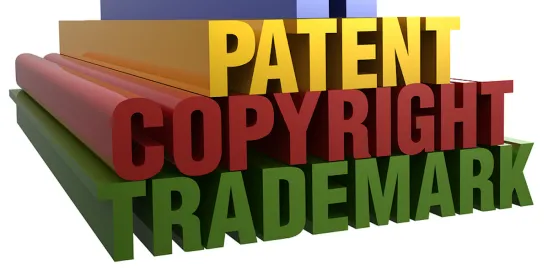On 1 February 2022, the Federal Circuit released its decision in Qualcomm v. Apple1 providing guidance on the treatment of Applicant Admitted Prior Art (AAPA) under 35 U.S.C § 311(b) in Inter Partes Review (IPR) proceedings. In doing so, the Federal Circuit vacated two IPR decisions2 of the Patent Trial and Appeal Board (PTAB) where the PTAB had found several claims of U.S. Patent No. 8,063,674 (“the ’674 patent”) unpatentable under 35 U.S.C. § 103. In doing so, the Federal Circuit remanded the case to allow the PTAB to address the specific issue of whether the AAPA cited by Apple improperly formed the “basis” of Apple’s § 103 challenge or was simply ancillary.
The ’674 patent, entitled, “Multiple Supply-Voltage Power-Up/Down Detectors,” is generally directed to integrated circuit devices with power detection circuits for systems with multiple supply voltages. Claims 1, 2, 5–9, 12, 13, and 16–22 of the ’674 patent are at issue on appeal. The ’674 patent acknowledges that most of the limitations of the patent’s claims were already known. In fact, Qualcomm did not challenge Apple’s contention that the combination of AAPA and Majcherczak3 teaches the entirety of claim 1, and only argued that Apple’s use of the combination was improper. The Board found that “[b]ecause AAPA is admitted to be prior art and is found in the ’674 patent, it can be used to challenge the claims in an inter partes review.”4
The parties’ main argument on appeal focuses on whether AAPA constitutes “prior art consisting of patents or printed publications” under § 311(b) such that it may form “the basis” of a ground in IPR proceedings. Qualcomm initially argued that § 311(b) precludes any and all use of a patent’s admissions in an IPR proceeding. On appeal, Qualcomm, backtracked, acknowledging that “general knowledge and non-Section 311(b) art” (e.g., AAPA) can play a role in IPR proceedings, however, may not form “the basis” of a ground in an IPR proceeding. Apple, on the other hand, argued that any “prior art”—including AAPA—that is contained in any patent or printed publication, regardless of whether the document itself is prior art, can be used as a basis for a challenge in IPR proceedings.
The Federal Circuit found that the PTAB incorrectly interpreted § 311(b)’s “prior art consisting of patents or printed publications” to encompass AAPA contained in the challenged patent itself. The panel noted “it does not follow that AAPA is categorically excluded from an inter partes review.” In doing so, the panel cites the original intent of creating a streamlined administrative proceeding via IPR challenges “only on the basis of prior art consisting of patents or printed publications.” Based on this, it concluded that utilizing AAPA does not run afoul of this intention. Furthermore, the panel remanded the case to allow the PTAB to address the specific issue of whether the AAPA cited by Apple improperly formed the “basis” of Apple’s § 103 challenge or was simply reinforcing the unpatentability theories.
The Federal Circuit’s decision is also consistent with recent policy set forth by the Director. On 18 August 2020, after the final written decision and notice of appeal in the underlying IPR, then Director of the USPTO, Andrei Iancu, issued a binding memo titled “Treatment of Statements of the Applicant in the Challenged Patent in Inter Partes Reviews Under§ 311” (“the Memo”). The Memo explains, “statements of the applicant in the challenged patent do not qualify as ‘prior art consisting of patents or printed publications,’ but fall into the category of evidence the Board may consider for more limited purposes.” Pg. 2. Additionally, the Memo notes that statements within a challenged patent “if used in conjunction with one or more prior art patents or printed publications forming ‘the basis’ of the proceeding under § 311, can support an obviousness argument.” Pg. 4.
Furthermore, the Memo provides a list of permissible uses of AAPA, including:
-
Supplying missing claim limitations that were generally known in the art prior to the invention (for pre-AIA patents) or the effective filing date of the claimed invention (for post-AIA patents);
-
Supporting a motivation to combine particular disclosures; or
-
Demonstrating the knowledge of the ordinarily-skilled artisan at the time of the invention (for pre-AIA patents) or the effective filing date of the claimed invention (for post-AIA patents) for any other purpose related to patentability.
Pg. 9. The Federal Circuit’s treatment of AAPA in Qualcomm is consistent the treatment described in the Memo, as acknowledged in the Opinion itself. Both the Qualcomm decision and the Memo acknowledge the critical role that can AAPA play in an obviousness analysis, however, both also acknowledge the limiting function of § 311(b) by noting that AAPA cannot alone form “the basis” of an IPR challenge.
Specifically, the Opinion distinguishes between using AAPA as “the basis” (i.e., the prior art reference in a ground) of an IPR challenge and using AAPA as factual support in an obviousness analysis during an IPR proceeding. In support of the latter usage of AAPA, the Qualcomm decision cites several related Federal Circuit decisions. For example, Federal Circuit case law provides AAPA can be used as a factual foundation of what a skilled artisan would have known at the time of invention.5 Additionally, AAPA can be used to furnish a motivation to combine6 and/or supplying a missing claim limitation that was “within the general knowledge of a skilled artisan.”7
From a practical standpoint, patentees should be cognizant of the fact that AAPA, although it cannot form “the basis” of IPR challenges, is still binding on patentees and can be used to support a petition and any obviousness theories presented in the petition. In particular, AAPA can be used, like exert testimony, to reinforce the interpretation of prior art, but cannot serve as the sole reason for unpatentability. On the Patent Owner and Applicant side, patentees should be precise with their characterization of the state of the art as well specific prior art references to mitigate later unintended effects of AAPA.
Footnotes:
-
2020-01558, 2020-01559
-
IPR2018-01315, IPR2018-01316.
-
U.S. Patent Application Publication No. 2002/0163364.
-
Apple Inc. v. Qualcomm Inc., IPR2018-01315, – 01316, 2020 Pat. App. LEXIS 5250, *18-19 (P.T.A.B. Jan. 3, 2020).
-
See McCoy v. Heal Sys., LLC, 850 F. App’x 785, 789 (Fed. Cir. 2021)
-
See Randal Manufacturing v. Rea, 733 F.3d at 1363 (Fed. Cir. 2021)
-
See Koninklijke Philips N.V. v. Google LLC, 948 F.3d 1337-8 (Fed. Cir. 2020)





 />i
/>i
